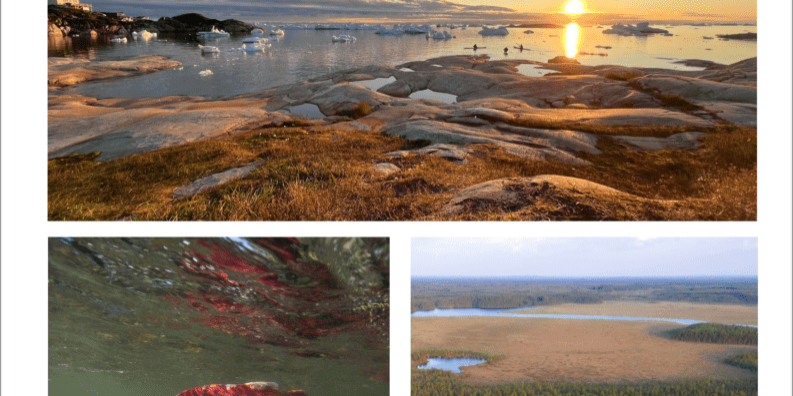The Arctic has been warming much faster in recent decades, but this year, it experienced its warmest July on record. This year was the sixth warmest year the Arctic has seen in over a century’s worth of data (since 1900).
The Arctic Report Card is an annual update sponsored by the National Oceanic and Atmospheric Administration] that provides observations of environmental conditions in the Arctic. The card highlights impacts climate conditions have towards what’re called “vital signs,” which includes sea surface temperature, tundra greenness, and sea ice.
There’s a lot of climate variability in the Arctic because it is such a large area. Rick Thoman is a climatologist for the International Arctic Research Center at UAF and an editor of the report. He said it wasn’t a particularly warm summer in western Alaska, but it wasn’t cool either.
“Iceland also had a relatively cool summer. Parts of Northwest Canada had, by far, their warmest summer record. But portions of the eastern Canadian Arctic were similar to western Alaska, where it was not a notably warm summer.”
He said variability is always part of the climate system and it’s not changing because the world is warming.

Thoman said temperatures as a whole for the Arctic were up about three degrees from the normal average, and about half a degree higher, than the previous warmest summer, which was in 2016. He said the warmest temperatures this year were seen on the North Slope, Eastern Brooks Range and Southeast Alaska.
“Very early snowmelt, [along with] the water coming out of Mackenzie River, into the southeast Beaufort Sea. Mackenzie of course, is one of the largest Arctic rivers. It’s been pumping out this firehose of hot water all summer long, so that greatly contributed to both the sea ice loss in the Beaufort [Sea] and the very warm ocean surface temperatures.”
Thoman said when there’s a warm summer, it increases the chances the following fall will be warmer too. It’s impossible to forecast next summer’s exact average temperature will be but Thoman said he’s certain it’ll be warmer than in historic averages.
“What really strikes me looking at that, in addition to there’s this very strong increase in the last 30 years, is that nowadays, even what looks like cool summers, like in 2021, 2020. They are warmer than any summer was prior to the early 2000s.
The report says several Arctic regions showed increased amounts of phytoplankton blooms in response to the warming climate. The only exceptions were in the Chukchi and Beaufort Seas as well as in the Canadian Archipelago.
The project works closely with the Alaska Arctic Observatory and Knowledge Hub (AKOKH), a group of observers representing five North Slope communities, which provides Indigenous knowledge and local perspectives of coastal conditions and their impacts on their communities.
Thoman said over ten thousand community observations have gone into making the Arctic Report Card, which can be found on NOAAs website.
Photo at top: A sunset from Ilulissat, Greenland. Ilulissat is known for its large icebergs. (Twila Moon, used with permission)




